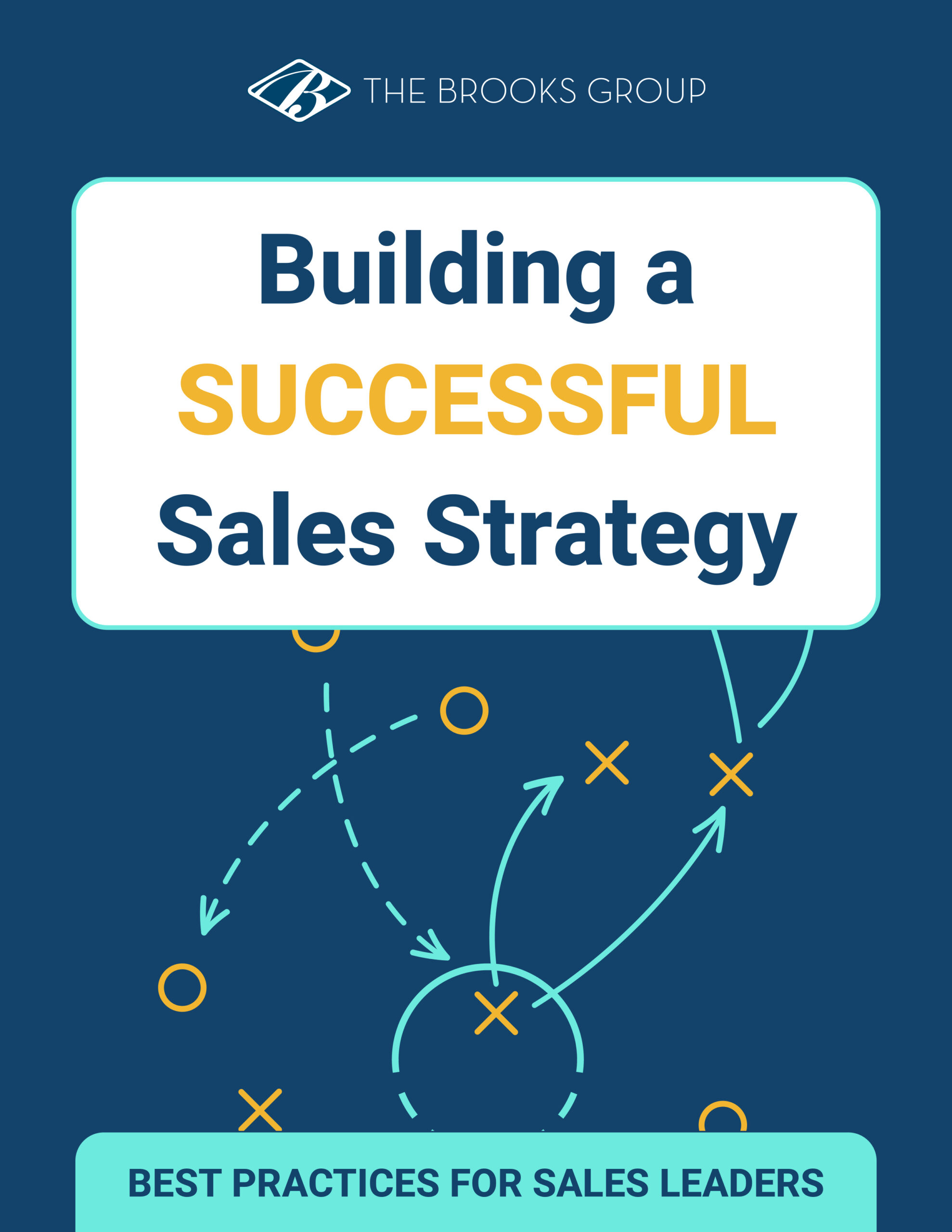Sales effectiveness is your sales professionals’ ability to achieve their goals and objectives efficiently and successfully. It encompasses various aspects of the sales process, including lead generation, prospecting, qualifying, presenting solutions, overcoming objections, negotiating terms, closing deals, and ultimately retaining customers for repeat business.
Sales effectiveness also corresponds with the return your organization gets from its sales investment. In this sense, measuring sales effectiveness can be as simple as calculating the cost of salaries, training, and/or tools against the revenue generated.
But improving sales effectiveness is a complex task that few organizations do well. That’s in part because they’re not focusing on the right metrics.
Most organizations track a few key performance indicators (KPIs) such as win rates, quota attainment, and revenue growth. But these measurements alone don’t give sales leaders enough information to make good decisions that improve performance.
Effective performance management requires establishing KPIs, metrics, and performance tracking systems to monitor individual and team performance, identify areas for improvement, and drive accountability.
Here’s a better way to measure the effectiveness of sales in your organization so you can improve performance.
The Difference Between Sales Effectiveness KPIs and Metrics
While both KPIs and metrics are used to measure performance, KPIs reflect the most important aspects of a business’s performance and directly align with its goals and objectives, while metrics are focused more on specific operational or tactical aspects of the business. Here’s an example of each:
Sales Effectiveness KPIs:
- KPI: Sales conversion rate
- Definition: The percentage of leads or prospects that are converted into paying customers within a specific time period.
- Calculation: (Number of Converted Leads / Total Number of Leads) x 100
- Importance: This KPI directly reflects the efficiency of the sales process in turning leads into customers. A high conversion rate indicates effective sales strategies and processes, while a low rate may suggest areas for improvement.
Sales Effectiveness Metrics:
- Metric: Sales call-to-close ratio
- Definition: The ratio of successful sales calls or meetings to the total number of calls or meetings made by sales representatives.
- Calculation: Number of Successful Sales Calls / Total Number of Sales Calls
- Importance: This metric provides insight into the effectiveness of individual sales representatives in closing deals. A high call-to-close ratio indicates strong sales skills and effective communication, while a low ratio may indicate a need for additional training or support.
Both the KPI and the metric focus on evaluating sales effectiveness, but the KPI (sales conversion rate) provides a high-level view of overall performance across the sales process, while the metric (sales call-to-close ratio) offers more granular insight into the effectiveness of sales activities at the individual level.
Align Sales Effectiveness Metrics with Sales Strategy
Developing a clear and effective sales strategy that aligns with the overall business objectives and targets the right market segments is the first step toward growth.
Your sales team’s overall effectiveness will depend, in part, on their ability to execute on your sales strategy. It’s not useful to measure KPIs that don’t contribute to sales outcomes. Instead, align your tracked metrics on sales force effectiveness with your strategic objectives.
For example, if your strategy calls for increasing sales of a particular product or service line, your KPIs should measure the leading and lagging indicators affecting that outcome. If you want to grow revenue, your KPIs should focus on sales volume, deal size, or win/loss ratio.
Choose KPIs for Each Sales Process Stage
Implementing well-defined sales processes that guide sales reps through each stage of the sales cycle—from lead generation to closing deals—is the next step toward sales success.
Big goals such as doubling profit in a year happen incrementally. Major achievements require many smaller victories over a longer span of time. To achieve long-term goals, you need to choose the right KPIs for each step in the sales process.
Start by breaking your sales process down into its logical chunks:
- Prospecting
- Pre-call research
- Buyer communication
- Strategic questioning
- Recommendation and proposal
- Closing and follow-up
Identify KPIs for each step in your sales process to reach your overall strategic goals.
Focus on a Few Targeted KPIs
At each stage of your sales process, narrow your primary focus to a few simple, targeted KPIs. While you may track many things, it’s impossible to focus on everything at once. You need to be able to analyze leading and lagging indicators to see historical performance and forecast trends.
Choose KPIs that fit these three criteria:
1. Aligned With Strategy
Focus on KPIs that show progress toward your sales goals. Make sure each KPI you track directly contributes to the outcomes you want.
2. Objectively Measurable
Make sure the KPIs you focus on are objectively measurable rather than subjective. For example, one way to track salesperson performance is by monitoring the number of good potential customers they add each week.
To do this effectively, it’s important to have a clear definition of what qualifies as a “good potential customer.” Having a precise definition will ensure accurate measurement of each sales professional’s contribution. Without a clear definition, salespeople may add many unqualified prospects to meet their goals.
3. Capable of Improvement
Choose KPIs that can be improved through training, sales enablement, sales support, or technology.
For instance, a KPI that measures how many companies exist within your target market cannot be improved by direct action within your organization, and therefore isn’t a useful measure for improvement.
A better KPI to track is how many new contacts a sales professional makes in your target market each week. This is a metric that can be measured and improved.
Sales Effectiveness Goal: Acquire New Customers
Another important way to measure sales effectiveness is by tracking growth in two areas: new customer acquisition and retention and expansion of existing accounts.
Sales productivity begins at the top of the sales pipeline. Not having enough qualified leads and prospects can really hurt a salesperson’s ability to perform well.
You want to track the number of potential customers generated in a sales cycle, if they are qualified, and how many move on to the next stage.
Other sample KPIs for improvement include:
- Conversion rate from marketing qualified lead (MQL) to sales accepted lead (SAL) through each stage of the process until close.
- Time spent researching before contacting a new prospect
- Number of new prospects generated from sales professionals’ networks
- Overall sales cycle length
- Percentage of sales professionals making quota
- Win/loss rate
You can improve your sales team’s performance by examining their actions and interactions with potential customers. This involves closely observing what they are doing and how they are building relationships. By analyzing these aspects, you can identify areas for improvement and implement strategies to enhance their effectiveness.
Sales managers can use this 17 Point Checklist to Measure Your Team’s Sales Prospecting Effectiveness to evaluate how well your sales team is generating new activity.
Sales Effectiveness Goal: Retain and Expand Existing Accounts
For B2B sales organizations, account management is a critical area to measure sales effectiveness. Gartner Group says 80% of future revenue will come from 20% of existing customers for your company. It is also far more profitable to retain existing customers than to find new ones.
Strategic account management focuses on solving problems, satisfying customers, and building relationships for more revenue in the long term.
Begin by identifying the KPIs that will help your team be most effective at account management. This blog post, The Account Management KPIs You Should Be Tracking, is a great place to start.
Once you define critical KPIs for retaining customers, strengthening relationships, and growing revenue, you can measure sales effectiveness at the account management level.
You can use the account management KPIs that make sense for your organization to measure how effective your team is at retaining, growing, and developing long-term relationships with your key clients.
Foster Continous Improvement
Sales effectiveness also requires you to provide comprehensive sales training and continuous development to equip your team with the skills, product knowledge, and techniques to effectively engage with prospects and customers. Encourage a culture of continuous learning and improvement within your sales organization.
Overall, sales effectiveness is about maximizing the efficiency and productivity of sales to drive revenue growth, increase market share, and deliver value to customers. Use this post to get more insight into how to leverage the right sales metrics to improve your team’s sales success.
Learn More
Find out how to improve sales team effectiveness with The Brooks Group IMPACT Selling® training and development programs.
White Paper Download
Building a Successful Sales Strategy
In this guide, we’ll share four key steps for building a successful sales strategy, and provide actionable takeaways to get you started.





